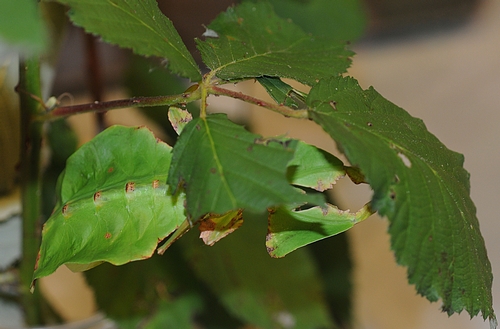Two newly moulted insects in the Bohart Museum of Entomology at the University of California, Davis, look just like leaves.
But these “leaves” are made for walking.
These are camouflaged insects (Phyllium giganteum), commonly known as "walking leaves." They're green, wide, and flat.
“They’re hard to detect among the leaves,” said senior museum scientist Steve Heydon. “It’s surprising how long it takes visitors to find them.”
The insects, natives of Malaysia, dine on bramble, oak, eucalyptus, raspberry, rose, and red/yellow salmon berry.
They mimic leaves in the wind by swaying as they walk, Heydon said. Females can reach a length of 5 inches.
“We got them as nymphs,” Heydon said. “They grow very slowly, probably the slowest of all the insects we’ve ever had at the museum. It took nine months for them to moult and become adults, and they each did it within a day of each other.”
The insects, splotched with red, look like green autumn leaves turning color. “With insect camouflage, there’s never a perfect leaf,” Heydon said. “You see simulated damage.”
Lynn Kimsey, director of the Bohart Museum and UC Davis entomology professor, said she’s always craved walking leaves for the museum. “They are so incredibly bizarre-looking,” she said. “It’s amazing how this insect develops new skin when its abdomen is as flat as paper.”
The Bohart Museum of Entomology, founded in 1946 by the late Richard M. Bohart, former chair of the UC Davis Department of Entomology, is dedicated to teaching, research and service. The insect museum houses more than seven million specimens, the seventh largest insect collection in North America.
The museum also includes live insects such as Madagascar hissing cockroaches, walking sticks, and black widow spiders.
But for now, the walking leaves are the big attraction.
At the Bohart, you can actually "turn over a new leaf"--and it will be an insect.
Attached Images:

Camouflaged

Walking Leaf